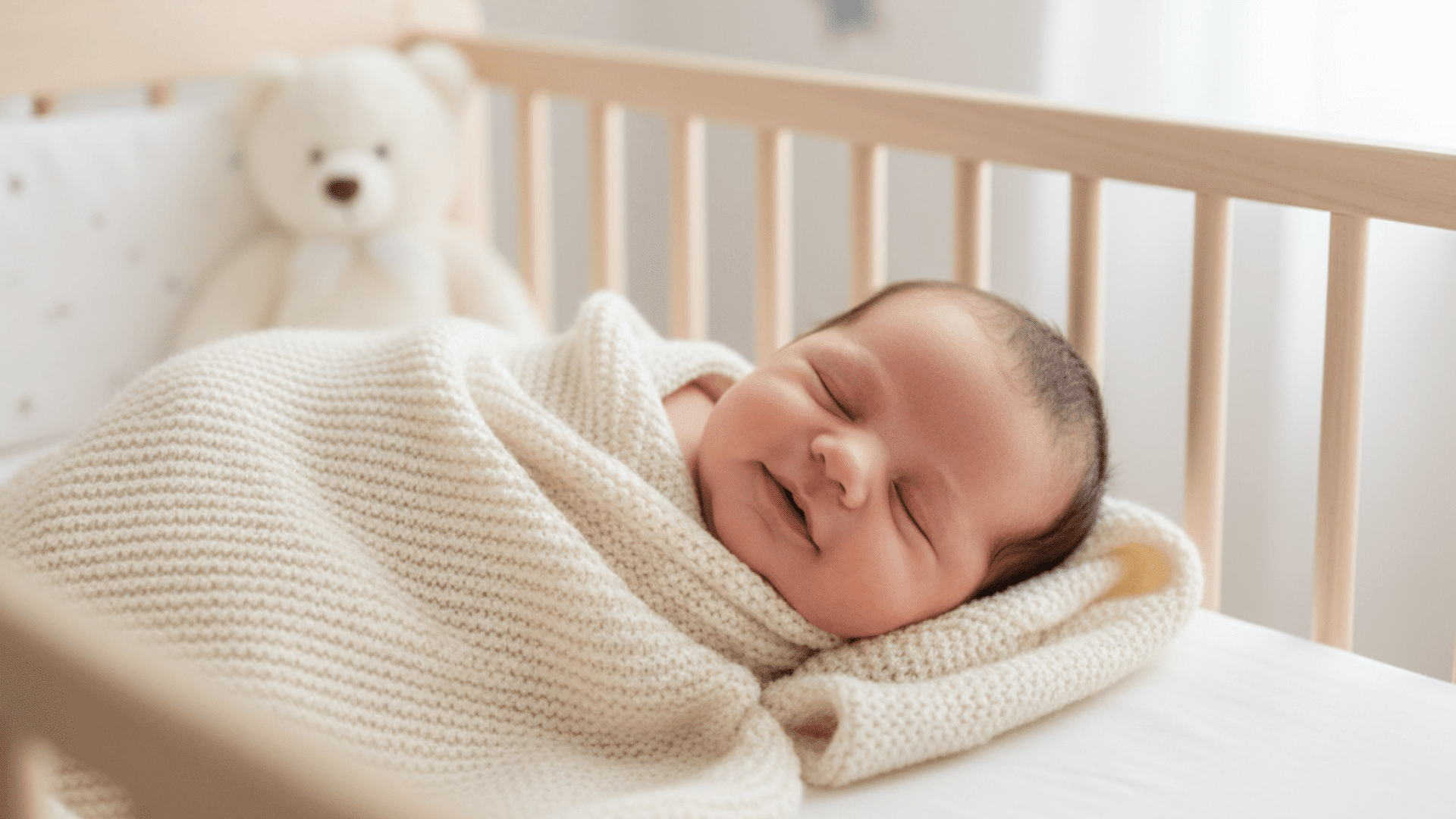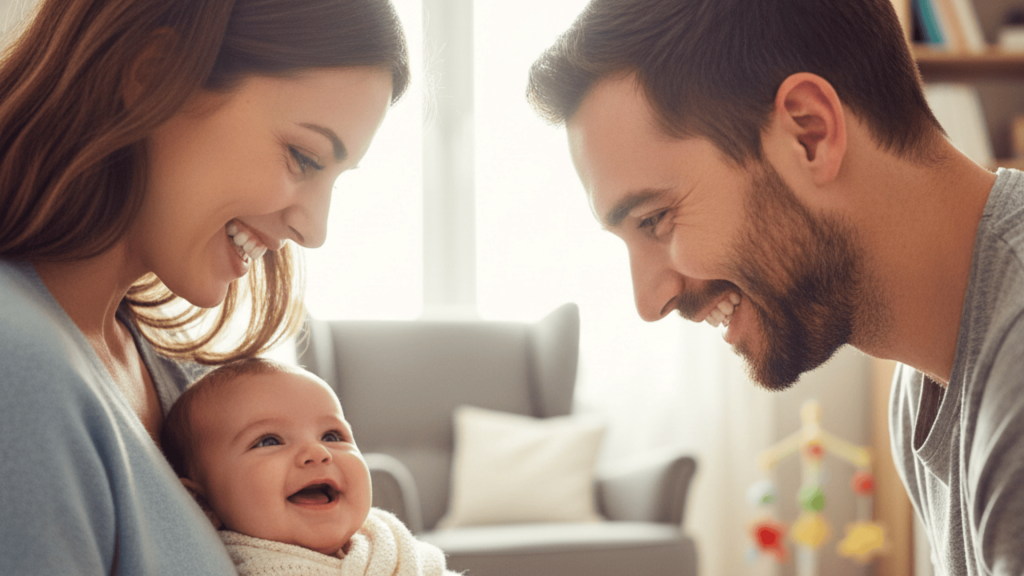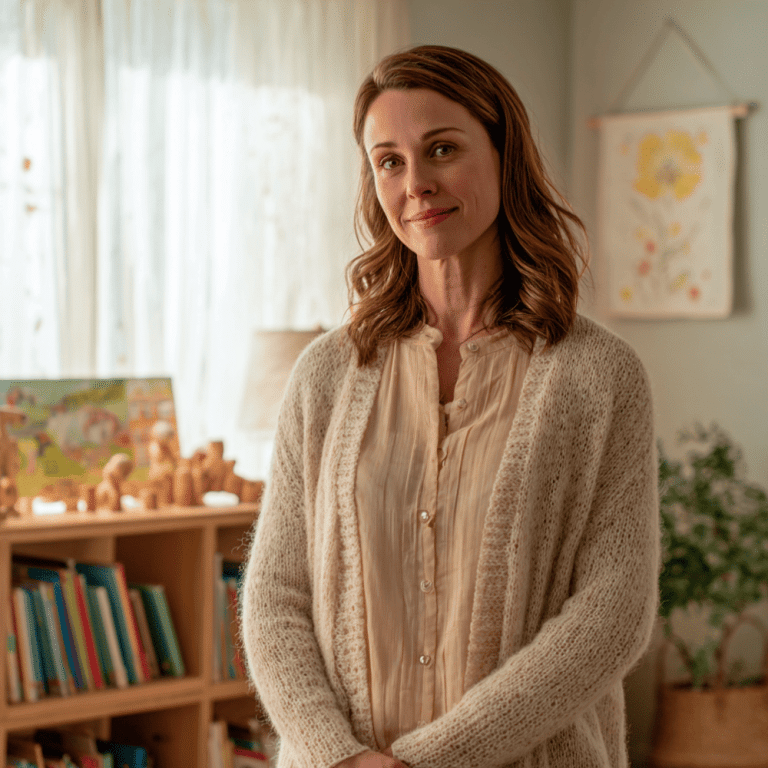There’s something magical about the first time a newborn’s lips curl into a grin. Parents often wonder what’s behind it; are they happy, dreaming, or simply moving their little muscles?
Understanding why newborns smile can be both fascinating and reassuring, because these early expressions are more than chance moments. A smile can signal healthy brain activity, show the beginnings of emotional growth, and open the door to connection.
In this blog, I’ll walk you through what these smiles reveal about your baby’s development, how they change over time, and why they matter so much. Let’s take a closer look at what these smiles mean.
Understanding Why Toddlers Smile
Seeing your newborn smile is one of the sweetest early moments of parenthood. But not every grin means the same thing. Some happen automatically, while others reflect real emotion.
Smiling is part of your baby’s development. It shows healthy brain activity, prepares muscles for expression, and eventually becomes a way to bond with you.
Let’s look at the main types of baby smiles and what they tell you.
1. Reflexive Smiles
Reflexive smiles begin at birth. These quick grins are automatic and often appear during sleep or small body changes like gas. They don’t show emotion, but help exercise facial muscles and signal healthy brain growth.
2. Social Smiles
Social smiles usually start around 6 to 8 weeks. This is when babies smile on purpose, often in response to familiar faces or voices.
Smiling back, making eye contact, or talking softly encourages more of these smiles, building trust and connection.
3. Playful Smiles and Early Giggles
By 3 to 4 months, smiles become more expressive. Babies grin during games, gentle tickling, or funny sounds. These playful smiles often lead to laughter, showing joy and deeper engagement with the world around them.
Why Do Newborns Smile in Their Sleep

Babies often smile in their sleep, and these expressions are usually linked to normal brain and body activity.
- REM Sleep Connection: Most sleep smiles happen during REM sleep, when the brain is active, and muscles twitch. These grins don’t mean your baby is dreaming, but show healthy brain and body development.
- Possible Explanations: Researchers suggest sleep smiles help the nervous system practice facial movements. They may also be tied to memory processing or a sign that the baby feels comfortable.
- Cultural and Spiritual Views: Some traditions believe babies smile in their sleep because they see angels. While science explains it as development, these views remain common in many families.
Sleep smiles are normal and show your baby’s brain is growing as it should.
Stages of Baby Smiles and Laughter
Smiling and laughing follow a natural path in the first year. Each stage gives you a glimpse of your baby’s growth and ability to connect:
| Stage | Age Range | What Happens | Why It Matters |
|---|---|---|---|
| Reflexive Smiles | 0–6 Weeks | Smiles appear during sleep or small body changes like gas. | Helps exercise facial muscles and shows healthy brain activity. |
| Social Smiles | 6–12 Weeks | Babies smile on purpose, often at faces and voices. | Marks the shift to real emotional expression and bonding. |
| Responsive Laughter | 3–4 Months | Babies laugh during play, tickling, or funny sounds. | Shows joy and deeper engagement with people and the environment. |
| Humor & Peek-a-Boo Smiles | Later Months | Smiles and giggles during games like peek-a-boo. | Reflects social awareness and builds stronger family bonds through play. |
These stages don’t happen at the exact same time for every baby. What matters most is responding warmly and enjoying each smile and laugh as a sign of healthy development.
What the Smile Really Means
A baby’s smile is more than just a milestone. It’s one of the first ways your child shows connection and begins to build trust.
Each grin is an invitation to interact. Over time, these small moments strengthen the bond between you and your baby.
For parents, a smile can ease stress and bring joy. It’s reassuring to know your baby is responding and thriving.
While early reflex smiles happen automatically, later joyful smiles are intentional. They reflect real emotional growth and mark the start of true social connection.
Ways to Encourage Your Baby’s Smiles
You play an important role in helping your baby move from reflexive smiles to real social ones. Everyday interactions can make your baby feel safe, cared for, and ready to share joyful expressions.
Here are some simple ways to encourage smiles:
- Eye contact, talking, and smiling back: Look into your baby’s eyes, smile, and speak gently. Responding to their expressions teaches them that smiling brings connection.
- Playful interaction and games: Try peek-a-boo, gentle tickling, or funny sounds. These playful moments often lead to smiles and laughter.
- Calm and responsive environment: Keep surroundings soothing and respond quickly to needs. A secure baby feels more relaxed and open to smiling.
These small gestures make a big difference. When you respond with warmth and gentle attention, your baby feels safe, supported, and ready to share more smiles.
Why That First Grin Feels So Special
A baby’s first real smile is more than a milestone; it’s a moment of reassurance for parents. That tiny grin shows your baby is growing, recognizing you, and beginning to connect in a new way.
Each smile also strengthens your role as a caregiver. Seeing your baby respond makes daily care feel more rewarding and builds confidence in your connection.
Smiles nurture family bonds, too. They invite interaction, create a sense of comfort, and bring lightness into everyday routines.
For many parents, those early grins ease stress and lift mood, reminding you that your efforts are making a difference.
Wrapping Up
A baby’s earliest smiles are more than sweet expressions; they are windows into growth, comfort, and connection. These small moments remind parents that development isn’t only measured in milestones but also in the shared joy of everyday life.
Understanding why newborns smile helps you see each grin as a sign of progress, from early reflexes to the first real spark of emotion. Every smile deepens your bond and shapes the foundation of trust your child will carry forward.
If you’d like more practical insights into supporting your baby’s early learning and wellbeing, be sure to read other helpful blogs on the website for fresh tips and guidance.
Frequently Asked Questions
Is it normal if my baby hasn’t smiled yet at 2 months?
Some babies smile a little later than others. If your baby isn’t smiling by around 3 months, it may be worth mentioning to your pediatrician, but small differences are usually normal.
Do premature babies smile at the same age as full-term babies?
Premature babies may reach smiling milestones a bit later when measured by actual age, but often line up more closely when you use their adjusted age.
How can I tell if my baby’s smile is real or just a reflex?
Reflex smiles usually happen during sleep or at random times and are quick and fleeting. Real smiles begin around 6 to 8 weeks, are more responsive, and often appear when your baby sees your face or hears your voice.
When do babies usually laugh for the first time?
Most babies start laughing out loud around 3 to 4 months. It often happens during play, gentle tickling, or hearing a playful voice. Laughter is a sign of joy and growing social awareness.











